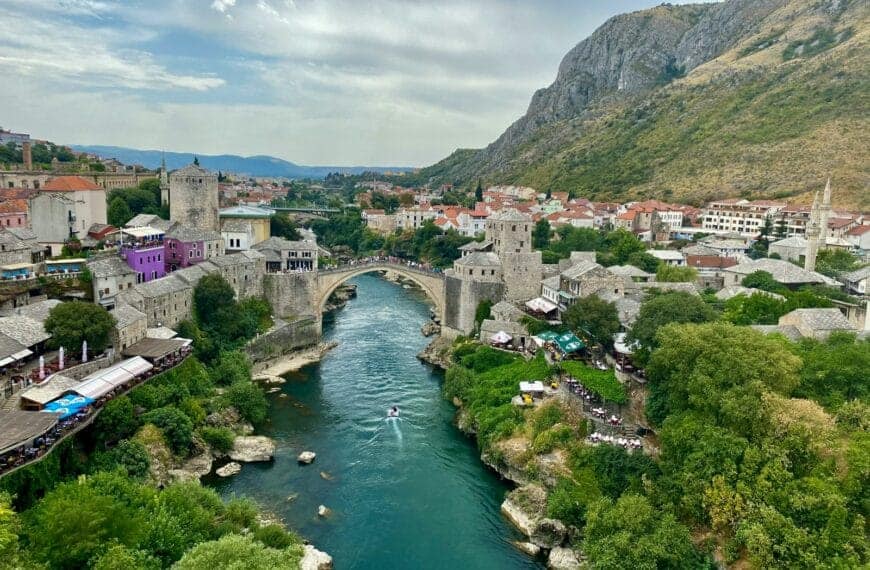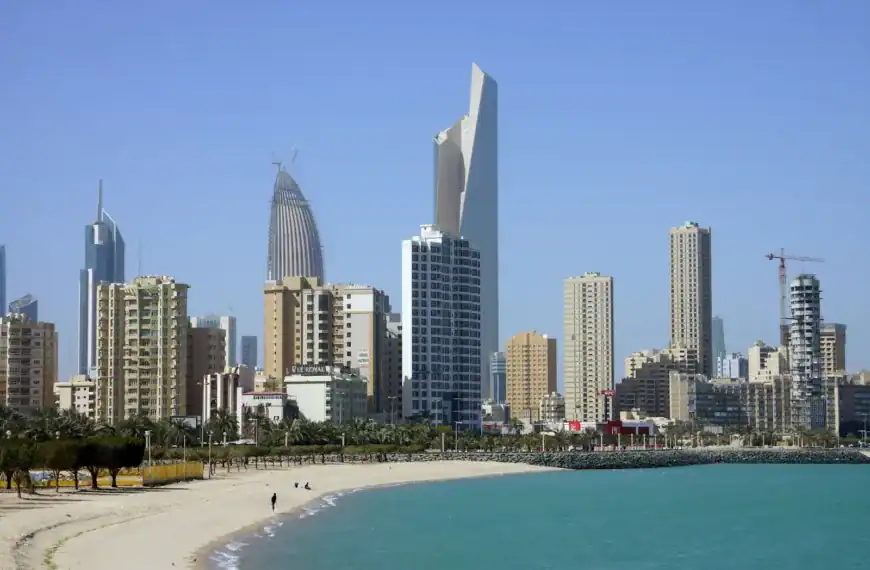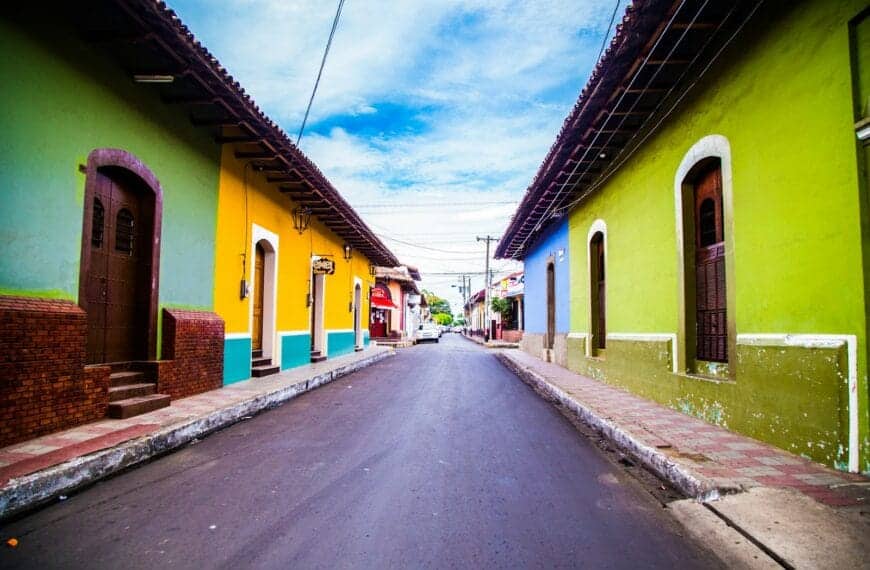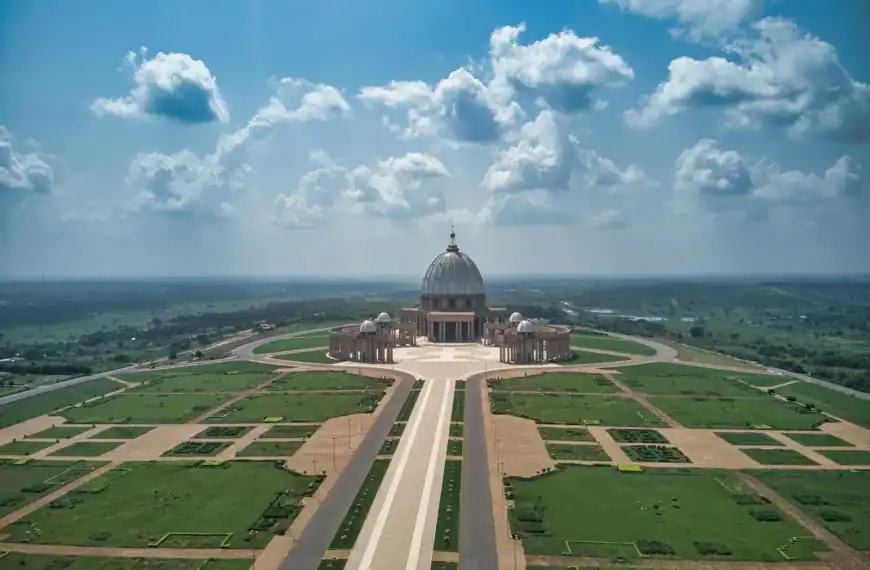Northern Ireland Travel Guide: Wild Landscapes & History
Intro to Northern Ireland Travel Guide
Northern Ireland offers a rich mix of dramatic coastlines, ancient castles, buzzing cities, and cultural traditions that are deeply rooted in its Celtic and industrial heritage. Located on the northeastern corner of the island of Ireland, it blends rugged landscapes with vibrant urban life, making it a destination where history and nature intertwine at every turn.
From the legendary Giant’s Causeway to the political murals of Belfast, Northern Ireland invites travelers to explore landscapes carved by both nature and culture. Its compact size means that in just a few days, you can journey from a windswept cliff to a bustling city square without losing time in transit.
Start your journey with our Northern Ireland Tour Guide and discover everything this region has to offer — from the Giant’s Causeway to the Titanic Belfast Museum.
Best Places to Visit in Northern Ireland
Armagh | Ballycastle | Ballymena | Bangor | Belfast | Coleraine | Derry (Londonderry) | Enniskillen | Larne | Lisburn | Newry | Portrush
💡Quick Facts:
Country: United Kingdom
Administrative Division: Northern Ireland
Continent: Europe
Area: 14,130 km² (5,456 mi²)
Population: ~1.9 million (2024 est.)
Density: ~135 people/km²
Capital: Belfast
Regions/Subregions:
. Belfast Metropolitan Area (Belfast, Lisburn, Newtownabbey)
. Causeway Coast and Glens (Giant’s Causeway, Portrush, Ballycastle)
. Mid Ulster (Cookstown, Dungannon, Magherafelt)
. Fermanagh and Omagh (Enniskillen, Lough Erne)
. Armagh, Banbridge and Craigavon (Armagh, Portadown, Craigavon)
. Newry, Mourne and Down (Newry, Mourne Mountains)
Official & Regional Languages: English (official); Irish and Ulster Scots recognized regionally
Currency: Pound Sterling (GBP)
Time Zone(s): Greenwich Mean Time (UTC+0); British Summer Time (UTC+1) in summer
Airports: Belfast International Airport (BFS), George Best Belfast City Airport (BHD), City of Derry Airport (LDY)
Climate: Temperate maritime; mild summers, cool winters, frequent rain
Known For: Giant’s Causeway, Titanic Belfast, coastal scenery, historic walled city of Derry / Londonderry, Mourne Mountains, Game of Thrones filming locations
🛂Arrival Info:
Entry requirements follow UK immigration rules; visa-free entry for many countries including US, Canada, EU, Australia (up to 6 months).
eVisa or Standard Visitor Visa for eligible nationalities; check UK Government Visa Guide.
Land border with Republic of Ireland open; no routine checks for most travelers.
Customs rules apply if arriving from outside the UK/Ireland Common Travel Area.
💉Health Info:
No mandatory vaccines for entry; routine vaccines recommended.
NHS provides emergency care; non-residents may pay for non-urgent treatment.
Private medical facilities available in major towns and cities.
Travel insurance recommended.
✅ Check travel insurance options for travel emergencies, delays, and medical needs abroad — Get coverage here
✅ Stay Informed with Official Updates: WHO – International Travel & Health | CDC – Travel health updates
🚨Travel Advisory:
Generally safe; petty theft rare but possible in tourist areas.
Check UK FCDO for updates.
Occasional political demonstrations; avoid large gatherings in sensitive areas.
✅ Stay Informed with Official Updates: US Travel Advisory | UK Foreign Travel Advice
📅Holidays:
January 1 – New Year’s Day
March 17 – St. Patrick’s Day
July 12 – The Twelfth (Orangemen’s Day)
December 25 – Christmas Day
December 26 – Boxing Day
💰Visitor Info:
Currency: GBP; ATMs common, contactless cards widely accepted.
Tipping 10% in restaurants if not included.
Budget: £60–90/day; Midrange: £100–150/day; Luxury: £200+/day.
Duty-free allowances apply for arrivals from outside the UK.
✈️Airports:
Belfast International Airport (BFS) – largest airport; 21 km from Belfast.
George Best Belfast City Airport (BHD) – close to city center; domestic and regional flights.
City of Derry Airport (LDY) – northwest access point.
✅ Delayed or canceled flight? Check if you’re eligible for compensation
🚍Transport:
Public buses and trains (Translink network) connect cities and towns.
Car rentals available; driving on the left.
Ferry links to Scotland and England.
Taxis and ride-hailing apps in larger towns.
✅ Book reliable airport transfers and in-city rides in advance. Reserve your ride here
📶Connectivity:
SIM cards from EE, O2, Vodafone, Three; eSIM options available.
Strong 4G coverage; 5G in major cities.
Public Wi-Fi in many cafés, libraries, and hotels.
✅ Stay connected abroad with affordable eSIM data packs. Get your eSIM here
📜Laws & Etiquette:
Legal drinking age: 18.
Smoking banned in indoor public spaces.
Respect cultural sensitivities around political symbols and flags.
Queuing is standard social etiquette.
🛡️Emergency Info:
Emergency number: 999 (police, ambulance, fire).
Non-emergency police: 101.
NHS medical advice: 111.
✅ Use embassy locator tools: Embassies Worldwide
🌦️Weather:
Mild year-round; average summer highs 15–20°C, winter highs 5–8°C.
Rain frequent; best travel period May–September for longer daylight and festivals.
✅ Stay prepared—check the weather forecast for your destination — Weather Forecast
Northern Ireland Cities and Major Destinations
Belfast
Northern Ireland’s capital is a city of revival, where industrial heritage meets creative energy. Titanic Belfast is the star attraction, telling the story of the world’s most famous ship in a striking waterfront building. The Cathedral Quarter is alive with music, street art, and cozy pubs serving local craft beers. Visitors can explore historic sites like Belfast City Hall and take political mural tours to understand the city’s complex history. Seasonal highlights include spring festivals and winter Christmas markets.
Derry/Londonderry
Known for its 17th-century walls — some of the best-preserved in Europe — Derry/Londonderry is a city steeped in culture. The Peace Bridge links the historic core with the modern waterfront, symbolizing reconciliation. The Tower Museum offers deep insight into local history, while the city’s Halloween celebrations are world-famous. Autumn here is particularly atmospheric, with crisp air and vibrant events.
Portrush
This coastal resort town is a hub for beach lovers and golfers. It’s the gateway to the Causeway Coast and home to Royal Portrush Golf Club, one of the world’s finest links courses. Surfers flock to East Strand, while families enjoy arcades and seaside dining. Summer brings lively festivals, while winter sees quiet, windswept beauty.
Bangor
Just a short train ride from Belfast, Bangor offers a charming marina, sandy beaches, and coastal walking paths. The North Down Coastal Path is perfect for walkers and cyclists, offering views of Belfast Lough. The town’s arts scene thrives, especially in summer when open-air concerts and events fill the calendar.
Armagh
As the ecclesiastical capital of Ireland, Armagh is known for its twin cathedrals dedicated to St. Patrick. The Armagh Observatory and Planetarium make it a family favorite, while Georgian architecture adds elegance to its streets. Spring is ideal for visiting when the surrounding orchards are in bloom.
Enniskillen
Set on an island in the River Erne, Enniskillen is a gateway to the lakelands of Fermanagh. Castle Island, Belleek Pottery, and boat cruises offer relaxing days out. Fishing, kayaking, and hiking in the surrounding countryside are popular year-round, but autumn’s golden colors add extra charm.
Newcastle
Nestled at the foot of the Mourne Mountains, Newcastle is a base for outdoor adventures. Hiking Slieve Donard, Northern Ireland’s highest peak, rewards visitors with panoramic views. The town’s beach and promenade are great for summer strolls, and nearby Tollymore Forest Park is magical in winter frost.
Ballycastle
A picturesque harbor town on the Antrim coast, Ballycastle is a launch point for Rathlin Island ferries. The town hosts the Ould Lammas Fair, one of Ireland’s oldest traditional markets, every August. It’s also a short drive to the Giant’s Causeway and Carrick-a-Rede Rope Bridge.
Lisburn
Known for its linen heritage, Lisburn boasts the Irish Linen Centre & Museum. The town is surrounded by rolling countryside and the Lagan Valley Regional Park, ideal for cycling and walking. In summer, the River Lagan’s towpaths are popular for boating and picnics.
Coleraine
This university town sits on the River Bann and offers easy access to the Causeway Coast. The historic Mountsandel Fort — the site of one of the earliest known settlements in Ireland — draws history buffs. Summer sees lively student life, while winter offers a quieter charm.
How to Choose Where to Go in Northern Ireland
Travelers who love history and culture should focus on Belfast, Derry/Londonderry, and Armagh for their museums, cathedrals, and heritage tours. Nature lovers will be drawn to the Causeway Coast, Mourne Mountains, and Fermanagh Lakelands for scenic hikes and water activities.
For coastal charm and outdoor sports, Portrush, Ballycastle, and Bangor make excellent bases. Those seeking a slower pace will appreciate smaller towns like Enniskillen or Newcastle, where nature is always within easy reach.
Whether your focus is golf, walking, photography, or food, Northern Ireland offers a compact yet diverse landscape where every traveler can craft a trip to match their passions.
Natural Escapes and Scenic Highlights
Northern Ireland’s landscapes are a blend of rugged coastlines, mystical forests, and rolling countryside.
Causeway Coast – This UNESCO World Heritage Site is famous for its basalt columns at the Giant’s Causeway, but the coastal road reveals countless hidden bays, cliffs, and walking trails.
Mourne Mountains – A hiker’s paradise with peaks, valleys, and reservoirs, the Mournes inspired C.S. Lewis’s Narnia. Walking routes range from gentle forest paths to challenging summits.
Fermanagh Lakelands – A network of waterways perfect for boating, fishing, and kayaking. Castle islands and lakeside villages make for peaceful exploration.
Antrim Glens – Nine valleys offering waterfalls, forests, and scenic drives. Glenariff Forest Park is particularly beautiful with its walking trails and picnic spots.
Strangford Lough – A vast sea inlet dotted with islands, rich in wildlife and ideal for kayaking and birdwatching.
Sperrin Mountains – Northern Ireland’s largest mountain range offers remote trails, cycling routes, and dark-sky stargazing opportunities.
Cultural and Historic Landmarks
Titanic Belfast – A world-class museum exploring the construction, voyage, and legacy of the RMS Titanic.
Carrick-a-Rede Rope Bridge – A historic fisherman’s rope bridge offering thrilling views of the Antrim coast.
Derry City Walls – Walk atop these 17th-century walls for panoramic views and a sense of living history.
St. Patrick’s Cathedrals, Armagh – Two cathedrals honoring Ireland’s patron saint, one Catholic and one Anglican, both architecturally stunning.
Mount Stewart House and Gardens – A National Trust property with exquisite gardens and a rich political history.
Dunluce Castle – Perched dramatically on a cliff edge, this medieval ruin is steeped in legends and sea lore.
Local Food, Arts, and Regional Experiences
Northern Ireland’s culinary scene blends hearty traditional dishes with contemporary flair. Must-try foods include Ulster Fry, soda bread, champ (mashed potatoes with scallions), and fresh seafood from the coast. Local markets like St George’s Market in Belfast showcase artisan cheeses, smoked fish, and craft beers.
The arts thrive in venues like the MAC in Belfast and the Millennium Forum in Derry, while music sessions in pubs keep traditional tunes alive. Seasonal festivals such as the Belfast International Arts Festival bring global talent to local stages.
Must-See Experiences in Northern Ireland
- Explore Derry’s city walls
- Walk the Giant’s Causeway’s basalt columns
- Cross the Carrick-a-Rede Rope Bridge
- Tour the Titanic Belfast Museum
- Drive the Causeway Coastal Route
- Hike Slieve Donard in the Mourne Mountains
Book immersive Northern Ireland tours and experience unforgettable things to do in Northern Ireland — from coastal hikes and castle tours to whiskey tastings and historic city walks.
Getting Around Northern Ireland
Despite its compact size, Northern Ireland offers a range of transport options that make it easy to explore both urban and rural areas.
Public Transport – Translink operates trains and buses connecting major cities like Belfast, Derry/Londonderry, and towns along key routes. The train journey between Belfast and Derry is one of the most scenic in Europe, hugging the coastline for much of the way. Buses are frequent in urban areas but may require planning for rural destinations.
Car Rental – For full flexibility, hiring a car is ideal. The Causeway Coastal Route, Mourne Mountains, and Fermanagh Lakelands are best explored with your own vehicle. Roads are generally well-maintained, and driving is on the left.
Cycling – There are excellent cycle routes, including the Comber Greenway and sections of the National Cycle Network. The Mournes and Antrim Coast are popular with road cyclists seeking scenic rides.
Ferries – Small ferries operate to islands like Rathlin and across Strangford Lough. These add a unique dimension to your journey and often link to walking or cycling routes.
Taxis and Rideshares – Available in cities and larger towns, though booking in advance is recommended for rural pickups.
Apps and Tools – Download the Translink app for timetables and ticket purchases. Google Maps and local walking apps like WalkNI are essential for navigation and hiking safety.
Best Time to Visit Northern Ireland
Northern Ireland’s weather is famously changeable, but each season offers unique rewards for travelers. Below is a detailed breakdown of what to expect year-round.
Spring (March–May)
Spring brings longer days, blossoming gardens, and milder temperatures averaging 8–14°C (46–57°F). This is the perfect time for walking tours in Belfast and Derry before the summer crowds arrive. The Armagh Apple Blossom Festival adds charm to rural visits, and the Mourne Mountains are lush with new growth. Light rain is common, so pack waterproof layers for outdoor adventures.
Summer (June–August)
This is peak travel season, with daylight stretching to nearly 18 hours in June. Temperatures hover around 15–20°C (59–68°F), ideal for coastal road trips and outdoor festivals. The Causeway Coastal Route is at its most photogenic, and beaches like Portstewart and Ballycastle are popular for swimming and surfing. Expect higher prices and book tours — such as Giant’s Causeway guided walks or Titanic Belfast tickets — well in advance.
Autumn (September–November)
Autumn offers crisp air, fewer crowds, and golden landscapes. Temperatures range from 8–15°C (46–59°F). The Sperrin Mountains and Fermanagh Lakelands are particularly beautiful under autumn foliage. This is also whiskey season, with distilleries offering special tastings. The Derry Halloween Festival — one of Europe’s largest — draws visitors from around the world, making late October a festive time to visit.
Winter (December–February)
Winter is the quietest season, with temperatures between 2–8°C (36–46°F). While days are short, the atmosphere is cozy, with Christmas markets, pub fires, and festive lights in Belfast and smaller towns. The Mourne Mountains and Antrim Coast can be dramatic under winter skies, perfect for photographers. Pack warm clothing and prepare for possible frosty mornings.
For long days and full access to tours, summer is best. For lower prices and striking scenery, opt for spring or autumn. Winter suits those seeking a slower pace, festive events, and moody landscapes.
Best Travel Itineraries in Northern Ireland
3-Day City & Coast Sampler
- Day 1 – Arrive in Belfast. Visit Titanic Belfast, explore the Cathedral Quarter, and enjoy a pub dinner with live music.
- Day 2 – Drive the Causeway Coastal Route, stopping at Carrickfergus Castle, Cushendun Caves, and the Giant’s Causeway. Overnight in Portrush.
- Day 3 – Explore Derry’s city walls, visit the Peace Bridge, then return to Belfast for departure.
5-Day Classic Explorer
- Day 1 – Belfast city walking tour, St George’s Market, and Titanic Belfast.
- Day 2 – Causeway Coastal Route with Dunluce Castle, Giant’s Causeway, and Carrick-a-Rede Rope Bridge. Overnight in Ballycastle.
- Day 3 – Rathlin Island ferry, birdwatching, and coastal walks. Return to Ballycastle.
- Day 4 – Mourne Mountains hike and Tollymore Forest Park. Overnight in Newcastle.
- Day 5 – Armagh cathedrals and orchards before returning to Belfast.
7-Day Cultural & Scenic Highlights
- Day 1–2 – Belfast exploration, Titanic Belfast, Black Taxi tour, and Botanic Gardens.
- Day 3 – Causeway Coastal Route highlights with overnight in Portrush.
- Day 4 – Derry walking tour and Tower Museum. Overnight in Derry.
- Day 5 – Fermanagh Lakelands boat trip and Castle Coole. Overnight in Enniskillen.
- Day 6 – Mourne Mountains hike, Slieve Donard ascent, and Newcastle stay.
- Day 7 – Armagh cultural sites before departure.
10-Day Deep Dive Adventure
- Day 1–2 – Belfast’s museums, street art, and food tours.
- Day 3–4 – Full exploration of the Causeway Coast, Rathlin Island, and hidden bays.
- Day 5–6 – Derry cultural immersion, Sperrin Mountains drive, and Glens of Antrim hikes.
- Day 7 – Enniskillen waterways, Belleek Pottery, and countryside cycling.
- Day 8 – Mourne Mountains multi-day hike or combined hiking and coastal walks.
- Day 9 – Strangford Lough kayaking and Mount Stewart Gardens.
- Day 10 – Leisurely final day in Belfast before departure.
Travel Safety and Cultural Etiquette in Northern Ireland
- Respect political sensitivities when discussing history — avoid assuming viewpoints.
- In rural areas, be mindful of farm gates and livestock; close gates behind you.
- Drive cautiously on narrow country roads and be prepared for tractors or cyclists.
- Use pedestrian crossings where possible; traffic drives on the left.
- Dress in layers — weather can shift quickly from sunshine to rain.
- In pubs, ordering at the bar is standard unless seated in a restaurant area.
- Tipping 10–12% in restaurants is customary for good service; rounding up in pubs is appreciated.
- Public displays of affection are generally accepted, but modesty is valued in formal settings.
- Photography is welcome in most places, but ask permission before taking close-up shots of people.
- Carry cash for rural shops and markets; card acceptance may be limited.
- Book ferries and popular tours ahead in summer to avoid disappointment.
- Learn a few Irish phrases — it’s appreciated, especially in cultural events or rural communities.
Nearby Provinces and Regions
Ireland Travel Guide | Scotland Travel Guide | Wales Travel Guide | Isle of Man Travel Guide
Final Planning Checklist for Northern Ireland
- Pack a waterproof jacket and layers for unpredictable weather.
- Download the Translink app for bus and train schedules.
- Reserve Giant’s Causeway and Titanic Belfast tickets in advance during summer.
- Carry small cash for rural cafes and markets.
- Check ferry schedules for Rathlin Island and Strangford Lough.
- Wear sturdy shoes for hiking and coastal walks.
- Pre-book accommodation for peak months (June–August).
- Try local specialties like an Ulster Fry and Bushmills whiskey.
- Use the Causeway Coastal Route map to plan scenic stops.
- Bring binoculars for birdwatching along coasts and lakes.
- Respect heritage sites — do not climb on fragile ruins.
- Charge devices nightly; rural areas may have limited charging points.
- Take a guided political mural tour for insight into Belfast’s history.
- Allow extra time for photo stops — scenery is everywhere.
- Carry a reusable water bottle; tap water is safe to drink.
Northern Ireland is a place where every turn reveals a story — from basalt cliffs shaped by ancient volcanic forces to streets echoing with music and history. Whether you’re drawn to the raw beauty of the Causeway Coast, the lively warmth of Belfast’s pubs, or the quiet charm of the lakelands, this corner of the world offers journeys you’ll remember for a lifetime.
Begin planning now, and let your next adventure lead you to Northern Ireland’s unforgettable landscapes and welcoming communities.










